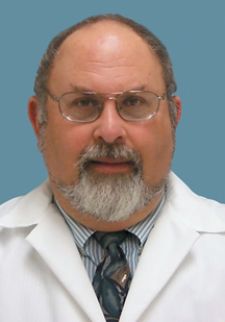
Edward M. Smith, ScD, FACNP, is a professor of imaging sciences in the Department of Imaging Sciences at the University of Rochester School of Medicine and Dentistry. Dr. Smith provides consulting service for both healthcare and industrial organizations (Bycast, InSiteOne, MTSDelft) in the areas of PACS and RIS and serves on the editorial boards of several healthcare publications. He is the conference director for Women's Health and Imaging 2007 that will be held Jan. 22-24, 2007, in San Antonio, TX, at The Westin Riverwalk Hotel. For more information visit www.urmc.rochester.edu/wh2007.
What inspired you to launch “Women’s Health and Imaging in a Digital Environment?”
The topic was selected as the second conference series presented by the Department of Imaging Sciences for several reasons. The health of women is of enormous social and economic importance with new diagnostic and treatment protocols constantly being introduced. The specialty is undergoing a major transition from a film and paper environment to one that is both paperless and filmless, which will have a significant impact on technology utilized, workflow and productivity. These are many of the same reasons we launched the highly successful PACS Conference series, which is now in its seventh year.
How is your conference different from what’s out there already? How is it trying to rise above the ‘meeting noise’ and attract attention without distraction?
The majority of women’s health conferences discuss a relatively focused segment of a topic, whereas our conference will cover a broad spectrum of topics including mammography, gynecological oncology and pelvic pain as well as osteoporosis and cardiovascular disease in post-menopausal women. The conference will discuss the most contemporary methods for the diagnosis and treatment of disease processes and will attempt to present patient management algorithms. With the participation of leading corporations, our conference will not only present the didactic approach to these serious health concerns, but also allow the attendees to experience a hands-on opportunity of how current technology facilitates the results utilizing ultrasound, MR, cone-beam CT, PET/CT, bone densitometry and in situ detection of metastatic lymphatic disease.
Why does the healthcare industry – specifically, your target audience of clinicians – need your conference? What is it doing that other organizations aren’t?
Our conference is one of the first conferences focused on a multidisciplinary approach to many facets of women’s health and also the first to address the issues that result from the transition from an analog to digital clinical environment. This meeting, aimed not only at radiologists, but also internists, family practitioners, technologists, nurses, administrators and others, highlights the technical improvement brought by digital technology to the diagnosis of breast diseases and gynecological oncology utilizing PET/CT. With respect to breast cancer specifically, the value of CAD and the advantage of digital mammography in certain groups of women are highlighted.
The topics of bone and cardiac health are included because of their prevalence in today’s ‘boomer’ population and the importance of digital technology in the evaluation of these disease processes.
How do you envision your conference fitting into the annual conference calendar – as a meeting that fills a gap among all the others or as one that adds considerable content depth than all the others can offer? Why?
Our Women’s Health conference does both. Actually our conference fills several gaps. It presents:
• How to implement the digital environment so as to achieve improved productivity and patient care while streamlining workflow
• Introduction of new technologies for the detection of specific disease in women such as cone-beam CT and PET/CT and
• Broad spectrum of content rather than dealing with very specific disease processes to attract healthcare personnel from a variety of specialties.
Even with the diverse coverage of topics, the conference presents an in-depth discussion of mammography from multiple perspectives — especially film-based versus digital and a breast biopsy workshop. Many practices are considering the move to digital mammography – currently less than 10 percent of the centers have digital capabilities.
The January timing, the sunny and warm San Antonio location and wide appeal of this conference make it attractive for radiologists, surgeons and primary care physicians and their staffs. The conference offers a maximum of 21 ‘AMA PRA Category 1 Credit’ of which 15 can be applied to general mammography, including 4.7 to digital mammography. In addition, up to 22 Category A CE credits approved by ASRT are offered, of which 16 can be applied to general mammography, including 5 to digital mammography. Application for CME credit has been filed with the American Academy of Family Physicians. Determination of credit is pending.
Why shouldn’t other associations and groups be concerned about your conference competing for attendees, members and supplier sponsorship dollars?
Our Women’s Health Conference is not trying to compete with other conferences. Our objectives are to provide a broad in-depth learning experience in a rapidly changing field to healthcare professionals who deal directly with patient care and those who are in supportive roles in healthcare facilities and industry.
Ultimately, what is the outcome toward which your conference is working? What do you hope attendees learn and gain from your efforts and take away from your meeting?
The goal of the Women’s Health Conference is to provide an annual opportunity for healthcare professionals who need to understand the current diagnostic and treatment trends for the health and well-being of women in a focused learning environment where there is the optimal mix of theory and practice along with the hands-on opportunity to see first hand the results of the advancement of technology in this important field.

